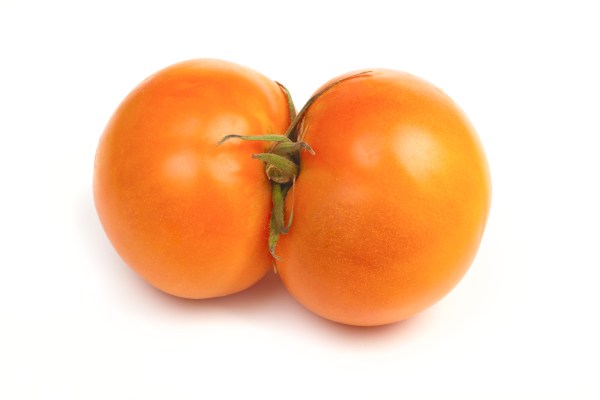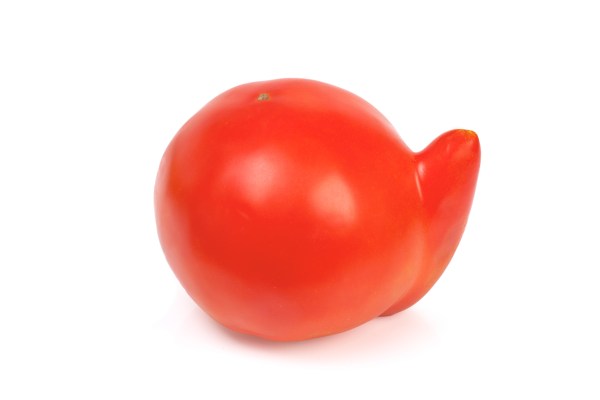
"It looks sorta like a butt. Throw it away!"
Jonathan Bloom’s book American Wasteland was published in 2010, but it wasn’t really until this year that the expansive problem of food waste in the United States drew the attention of the likes of Last Week Tonight and, lately, the United Nations. In September, the U.S. Department of Agriculture and the Environmental Protection Agency announced an official combined effort to target food waste.
Food waste is just what it sounds like — we’re wasting both fresh foods and processed foods, throwing away up to 40 percent of uneaten food each year. That statistic is staggering when you put it next to the percentage of American children who go to bed hungry each night: 21 percent. Nearly a quarter of our children don’t know where their next meal will come from, while $165 billion worth of meals are thrown away.
There are lots of reasons this happens. Firstly, we like to buy pretty food. We’re convinced that carrots have to be perfectly shaped, even though that has no impact on their taste or nutritional value. If they’re too fat or crooked or not orange enough, they’re rejected by photographic sensors at the farm. They don’t even make it to supermarket shelves. More than 25 percent of U.S. carrot harvests are either tossed or added to animal feed, because they’re not really, really, ridiculously good looking.
Some farms will leave this produce on the ground to rot not only because it’s misshapen, but because it’s not at peak ripeness for shipping. This “second-class” classification of otherwise perfectly edible fruits and veggies reduces an item’s value by two-thirds, making it more cost-effective to toss out than to try and re-package for other purposes.
The “ugly food” movement is an effort to bring a sort of “dented and dinged” section for produce to supermarkets, similar to what’s happening now in Europe. It’s also about letting go of our predilection towards only buying the biggest and brightest offered, despite this having no impact on the quality of the food. Honestly, why do we care if a peach isn’t completely round if we’re just slicing it up for a cobbler?
A lot of the time, we buy produce we’re not going to have time to eat, because it’s available and affordable. Up to 20 percent of the food we buy, we throw away, which is a significant part of your monthly budget going in to the garbage.

"Is that an upside down comma or a tomato? I'm not eating it!"
It’s also important to mention that tossing that organic material in a landfill — where it doesn’t biodegrade at the same rate as the plastic grocery bags it came in — results in higher methane emissions. This is why the EPA has gotten involved with the food waste problem. They’ve launched the Food Recovery Challenge, a program to work with farmers and grocers to get the unpretty and unsold produce donated to food pantries, instead of rotting away and adding to greenhouse gasses.
But not only is the actual produce being wasted, we’re wasting all the effort and resources that goes in to growing it. That’s a real kick in the pants when you realize that California both supplies 50 percent of the nation’s fresh food and is experiencing unprecedented drought. Using 80 percent of our fresh water to irrigate vegetables that will never be eaten seems beyond-insane.
Another issue is “use-by” or “sell-by” dates on cans of food that don’t really go bad when we think. Manufacturers put expiration dates on everything, but most of the time, it’s either a guess on their part, or a strategy to get people to impulse buy “close-dated” cans of their potted meat. And when these largely made-up (and confusing) time stamps pass by, supermarkets will toss food by the ton, instead of donating it, for fear of safety violations that don’t actually exist.
That’s when food goes to the landfill. Because people are afraid it’ll make them sick, because it doesn’t look perfect, because it won’t survive being shipped across the country, or no one can afford the cost to box it up and donate it. The USDA is asking Congress to write lasting legislation that would give tax deductions to food manufacturers that directly donate their product to those in need. Currently, these sorts of tax breaks have to be renewed yearly, which discourages smaller farms and businesses from trying to take advantage of them.
But it’s not just Federal law that needs to improve in order to reduce our food waste. It will take psychological retraining to unlearn the wasteful habits we’re all guilty of. Don’t pass over the last bunch of bananas on the table just because they’re the last bunch. Only buy what you need. Only make what you’re going to eat. (We gotta chill out on the gigantic portion sizes, not just for your waistline, but for the waste line.)
These are all things the USDA hopes to achieve as they spearhead this push. They’re challenging the country to reduce food waste by 50 percent by the year 2030, and are hoping to raise a generation that abhors food-based wastefulness in the same way we’ve stigmatized littering.






